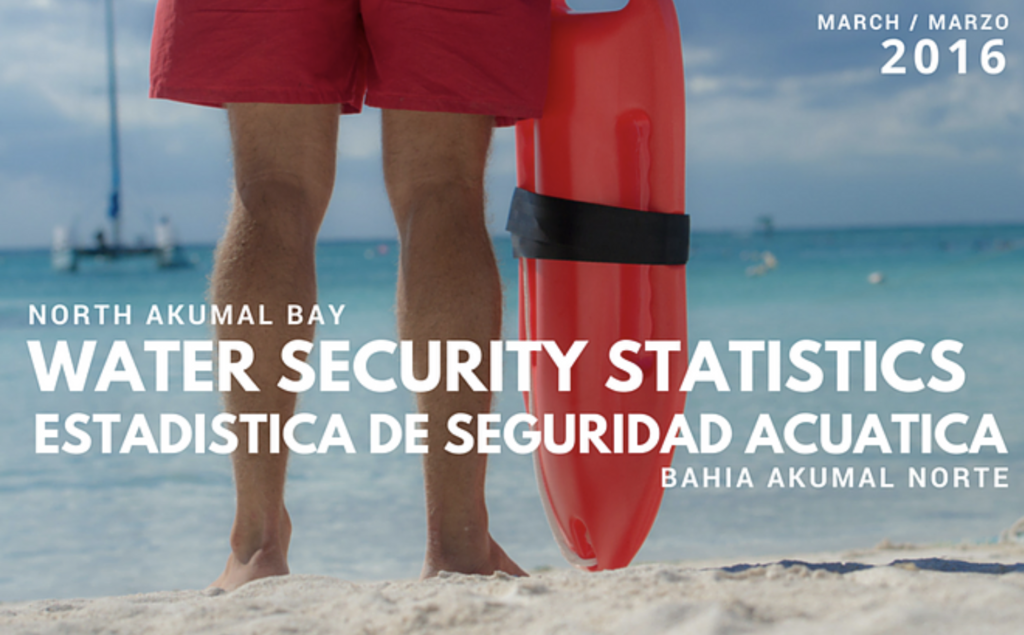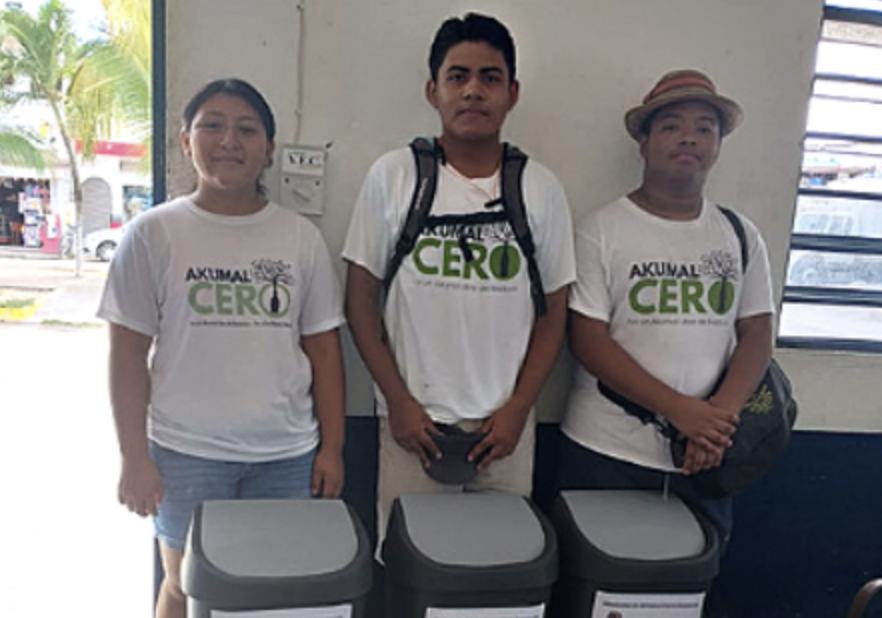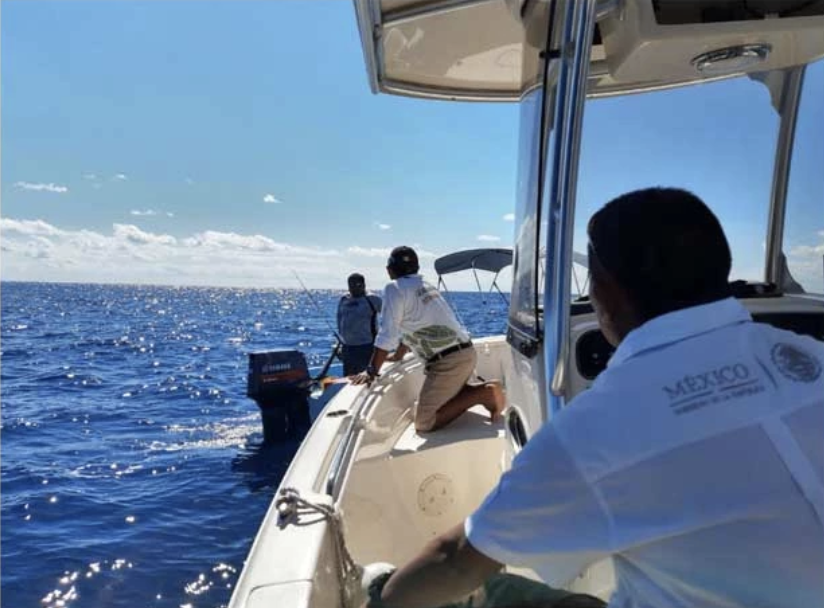Coastal Ecosystems Program, Centro Ecológico Akumal.

During the last weeks, the staff of the coastal ecosystems program has been given the task of continuing with the maintenance activities of the corals seeded in 2019 and of the corals in the Media Luna and Morgan nurseries. After the passage of the storms and hurricanes that have affected us in the state, the maintenance of the broken lines was attended, particularly after the passage of Eta, which unfortunately caused the complete loss of a nursery that was in Las Redes and broke 2 lines of the half-moon nursery. The damaged lines were replaced with new ones and approximately 25 fragments were rescued, although a similar number were lost in the same way, due to the fact that they bleached from the stress of colliding with each other and from falling to the sandy substrate.
Fortunately, the effects of storms Cristobal and hurricanes Delta and Eta were not as intense as happened in the reefs further north, at least in the portions of the frontal reef that were the ones that were immediately evaluated in the immediate response actions afterward. from the passage of hurricanes. . The main effect observed was towards soft corals (gorgonians), which were the first to suffer mortality since they are relatively more fragile when pulled or broken from their bases due to the strong waves generated by the wind. No significant physical damage was observed in branched hard corals (Acropora) or massive corals. However, it is still necessary to evaluate the damage that occurred in the habitat of the reef crest, this evaluation will be carried out in the coming days since it had not been possible to implement actions in that area due to bad weather, which caused the strong swell and swell. Corals have probably suffered the most in this habitat due to its shallow depth.

The Akumal Bay bottom mapping study was also attended to, to identify the distribution of the main components that dominate the bay (corals, seagrasses, algae, among others), and compare it with data from 3 years ago to identify changes in the system over time. For this, intensive sessions were implemented to collect information through video-transects paired with geo-referencing to find out what type of coverage there is in a specific point of the bay.

Similarly, the annual coral bleaching / coral tissue loss syndrome study was implemented, in collaboration with the Healthy Reefs initiative, at 5 sites in Akumal. The data is being analyzed, however, a high incidence of bleaching was identified in the corals in the area, and although little syndrome was detected, the effects that the latter has had on the corals of Akumal for the last two years has been devastating, with a high loss of coral cover and expansion of macroalgae.
The fish of the Akumal Fishing Refuge will also be monitored to identify the biodiversity, abundance, and biomass of the main species inhabiting this protected area.
Resumen de actividades Oct-Nov 2020 Programa de restauración coralina en Akumal
Por Baruch Figueroa-Zavala, coordinador del programa de Ecosistemas Costeros..

Durante las últimas 5 semanas, el staff del programa de ecosistemas costeros se ha dado a la tarea de continuar con las actividades de mantenimiento de los corales sembrados en 2019 y de los corales en los viveros de Media Luna y Morgan. Tras el paso de las tormentas y huracanes que nos han afectado en el estado, se atendió al mantenimiento de las líneas rotas particularmente tras el paso de Eta, el cual desafortunadamente provocó la pérdida completa de un vivero que se tenía en Las Redes, y rompió 2 líneas del vivero de media luna. Se re-colocaron las líneas dañadas por nuevas y se rescataron aproximadamente 25 fragmentos, aunque se perdió un número similar de igual modo, debido a que se blanquearon por el estrés de chocar entre ellos y por caer al sustrato arenoso.
Los efectos de las tormentas Cristóbal y huracanes Delta y Eta afortunadamente no fueron tan intensos como sucedió en los arrecifes más al norte, al menos en las porciones del arrecife frontal que fueron los que se evaluaron inmediatamente en las acciones de respuesta inmediata tras el paso de los huracanes. El principal efecto que se observó fue hacia los corales blandos (gorgonaceos), los cuales son los primeros en sufrir mortalidad ya que son relativamente más frágiles a ser arrancados o rotos de sus bases debido a las fuertes marejadas que genera el viento. No se observó daño físico considerable sobre los corales duros ramificados (Acroporas) o sobre los corales masivos. No obstante, es necesario aún evaluar el daño sucedido en el hábitat de la cresta arrecifal, el cual está pronto a realizarse en los siguientes días, ya que por el constante mal clima de las últimas semanas no se ha podido implementar acciones en esa zona por el fuerte oleaje y marejada, y es más probable que debido a la poca profundidad a la que se encuentran, los corales hayan sufrido más en este hábitat.
También se atendió al estudio del mapeo del fondo de la bahía de Akumal, para identificar la distribución de los principales componentes que dominan la bahía (corales, pastos marinos, algas, entre otros), y compararlo con datos de hace 3 años para identificar cambios en el sistema a través del tiempo. Para ello, se implementaron intensivas jornadas para colecta de información mediante video-transectos pareados a geo-referenciación para conocer qué tipo de cobertura se tiene en un punto específico de la bahía.
De igual modo, se implementó el estudio anual de blanqueamiento de coral /síndrome de pérdida de tejido de coral, en colaboración con la iniciativa Healthy Reefs, en 5 sitios en Akumal. Los datos están siendo analizados, no obstante,
se identificó una alta incidencia de blanqueamiento en los corales de la zona, y aunque se detectó poco síndrome, los efectos que ha tenido este último en los corales de Akumal por los últimos dos años ha sido devastador, con una alta pérdida de cobertura coralina y expansión de macroalgas.
Se realizará también el monitoreo de peces del Refugio Pesquero de Akumal, para identificar la biodiversidad, abundancia y biomasa de las principales especies habitando esta área de protección.
www.ceakumal.org



